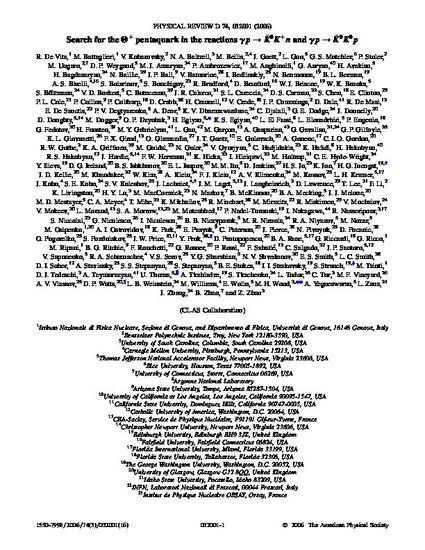
The exclusive reactions γp→K0K+n and γp→KOK0p have been studied in the photon energy range 1.6–3.8 GeV, searching for evidence of the exotic baryon Θ+(1540) in the decays Θ+→nK+ and Θ+→pK0. Data were collected with the CLAS detector at the Thomas Jefferson National Accelerator Facility. The integrated luminosity was about 70 pb−1. The reactions have been isolated by detecting the K+ and proton directly, the neutral kaon via its decay to KS→π+π− and the neutron or neutral kaon via the missing mass technique. The mass and width of known hyperons such as Σ+, Σ− and Λ(1116) were used as a check of the mass determination accuracy and experimental resolution. Approximately 100 000 Λ∗(1520)’s and 150 000 ϕ’s were observed in the K0K+n and K0K0p final state, respectively. No evidence for the Θ+ pentaquark was found in the nK+ or pKS invariant mass spectra. Upper limits were set on the production cross section of the reaction γp→K0Θ+ as functions of center-of-mass angle, nK+ and pKS masses. Combining the results of the two reactions, the 95% C.L. upper limit on the total cross section for a resonance peaked at 1540 MeV was found to be 0.7 nb. Within most of the available theoretical models, this corresponds to an upper limit on the Θ+ width, ΓΘ+, ranging between 0.01 and 7 MeV.
Available at: http://works.bepress.com/angela_biselli/78/
